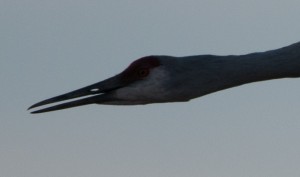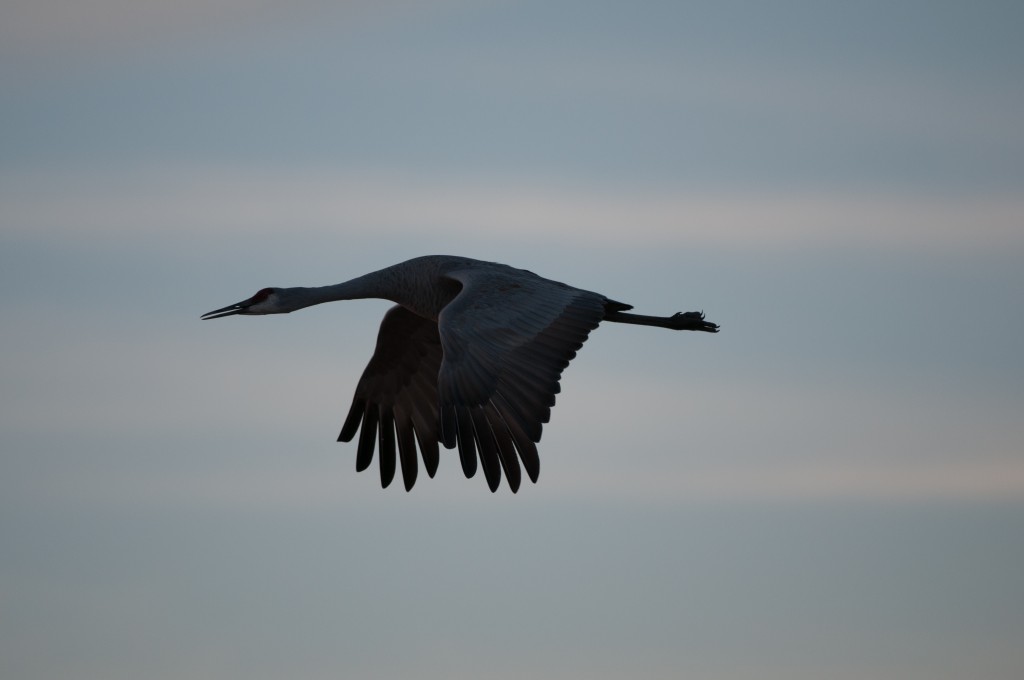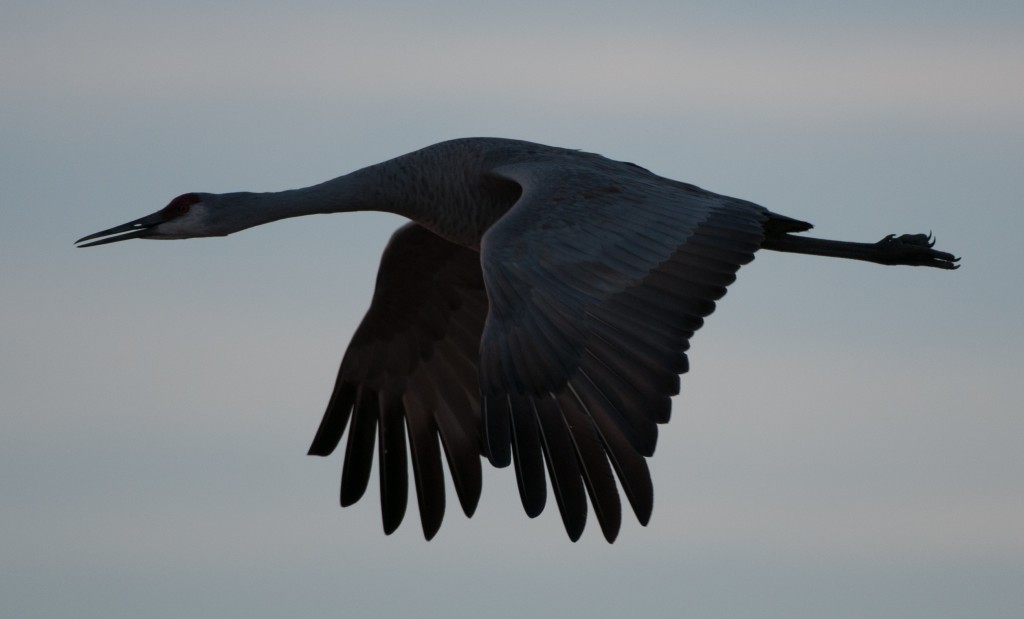Our Anacortes weather hasn’t been conducive to taking photographs and I’ve been busy with seasonal activities, so to be able to keep the postings flowing I’m going to post some photos and commentary relating to the Bosque del Apache National Wildlife Refuge just south of Socorro, New Mexico. The Bosque, as is familiarly known, is known for its Sandhill crane population that winters on the refuge. I’ll go into a little more detail regarding the cranes in a future post, but first I want to highlight a remarkable photographic engineering fete regarding the camera and lens I use.
As stated elsewhere on this site, my primary camera is a Nikon D-300S. With it I use a Nikkor F4 200-400mm lens, occasionally augmented by a 1.7X tele-extender, an additional lens that fits between the primary lens and the camera body. The Nikkor lens has image stabilization which is very useful, and I usually obtain further stabilization from a carbon fiber monopod which, while not as steady as a tripod, nevertheless provides good stabilization and more flexibility.
One evening at the Bosque, as the sun was setting, I took the following photograph of a Sandhill crane in flight.
Due to the magnification of the lens at 400mm, the photo was taken at a range of something I would estimate at 50 yards or more.
Cropping the photograph to make it more interesting (ie, eliminating a considerable amount of surrounding ‘nothingness’) gives the following image.
But the amazing feat of this camera and lens is that magnifying the images even more reveals that it is still very sharp… so sharp, in fact, that you can see through the hole (nostril?) in the crane’s bill! 
Keep in mind that this was in fading light, with a 400mm lens and a subject in motion!
Next up: Coyotes versus Cranes in the Cornfields (How’s that for alliteration? I have several prior English teachers who, were they still alive, would be very proud of me!)


